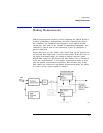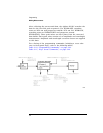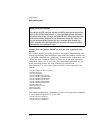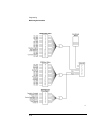
3-13
Programming
Making Measurements
The benefit of non-sequential commands is that, in some situations,
they can reduce the overall execution times of programs. For example,
you can set the peak excursion, peak threshold, and elevation and use
a *WAI command at the end to save time. However, non- sequential
commands can also be a source of annoying errors. Always use the
*OPC query or *WAI command with the non-sequential commands to
ensure that your programs execute properly.
For example, suppose that you wanted to set the elevation correction
value and then send an :INIT:IMM command. The following program-
ming fragment results in an error “–213 Init ignored”. This occurs
because the :ELEVation
command causes the recalculation of the data
which is like sending the :INIT:IMM command. When the actual
:INIT:IMM is sent, the error occurs because the command is already in
progress.
OUTPUT 720;”:INIT:IMM”
OUTPUT 720;”:SENSe:CORRection:ELEVation 1000”
OUTPUT 720;”:INIT:IMM”
Use an *OPC? query to ensure that the :ELEVation command has com-
pleted as shown in the following lines:
OUTPUT 720;”:INIT:IMM”
OUTPUT 720;”:SENSe:CORRection:ELEVation 1000”
OUTPUT 720;”*OPC?”
ENTER 720;Response$
OUTPUT 720;”:INIT:IMM”
Or, the *WAI command could be used:
OUTPUT 720;”:INIT:IMM”
OUTPUT 720;”:SENSe:CORRection:ELEVation 1000”
OUTPUT 720;”*WAI?”
OUTPUT 720;”:INIT:IMM”


















